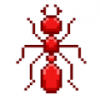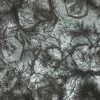As of recently, I have begun my new summer job as a professional beekeeper ant Jones Apiaries: a small local business that sells honey and bee keeping equipment. while on the job site, Ted (owner) showed me how to mark queens with the use of a special acrylic paint marker (can be found at Micheal's and bought for 2-3 dollars). After showing me this, I decided that this may serve as more efficient method than what I currently use to tag ants (painting them with acrylic paint with the use of a single human hair). With a fast drying time and the fact that it is non-toxic, markers such as these should be perfect for my line of work. I just bought a few of them and will try them out soon on a few Tetramorium queens. In other news, I have been considering establishing some some sort of ranking system that would aid the average hobbyist in classifying types of brood present within the nest. This can be used to determine how many future generations are currently secured within a colonies brood piles and to describe the types and amounts of brood found within the nest without the use of a camera or huge walls of text. Here is what I have developed for my own personal use:
A: Miscellaneous eggs
B: Micro larvae and lower-medium sized larvae
C: Higher medium sized larvae
D: Pre-pupal larvae
E: Pure-white pupae (execrate)
F: Light-brown pupae (execrate)
G: dark-brown / black pupae (execrate)
D-G: coccoon (pupae)
The same can be done for caste specific brood, here are some examples:
C / L: Extra large, fully developed larvae (unidentifiable)
D / M: Male pre-pupal larvae
D / (insert specific female species-specific caste): (minim, minor, media, sub major, major, super major, queen) pre-pupal larvae
E / (insert specific female species-specific caste): (minim, minor, media, sub major, major, super major, queen) pure-white pupae (execrate)
E / M: Male pure-white pupae (execrate)
F / (insert specific caste): (minim, minor, media, sub major, major, super major, winged queen, wingless queen ,male) light-brown pupae (execrate)
G / (insert specific caste): (minim, minor, media, sub major, major, super major, winged queen, wingless queen ,male) dark-brown pupae / black pupae (execrate)
D-G / (insert specific caste): (minim, minor, media, sub major, major, super major, winged queen, wingless queen ,male) cocoon (pupae)
Edited by ctantkeeper, July 8 2016 - 2:55 PM.
















